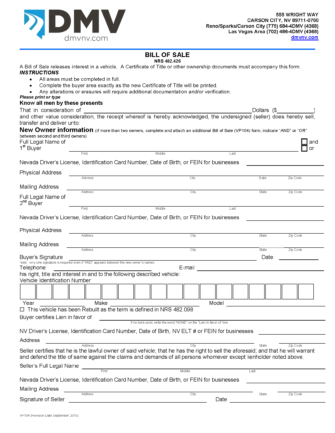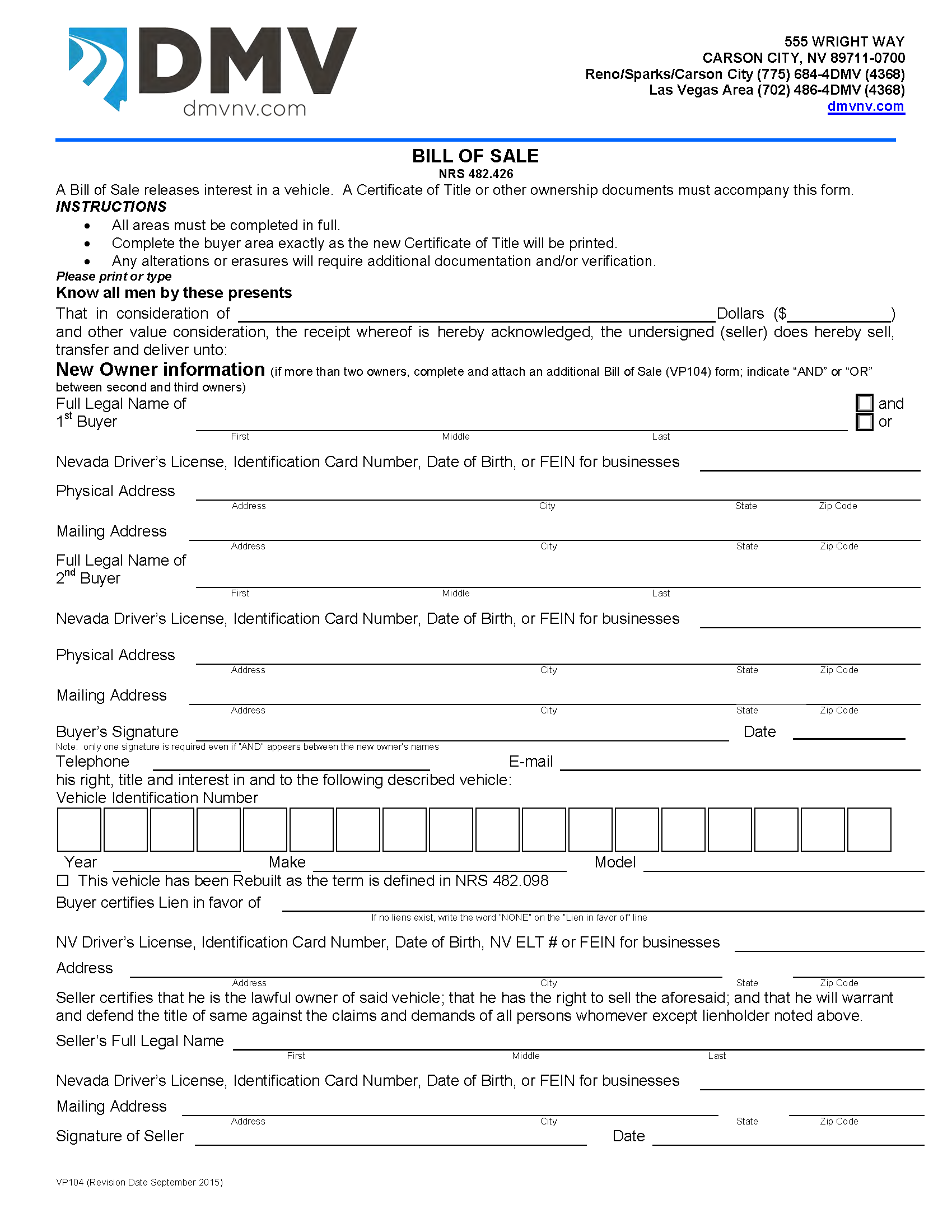Nevada Vehicle Registration (4 Steps)Vehicles must be registered with the Nevada DMV within 30 days of the sale.[1] 1. Purchase Automobile InsuranceBefore driving on public roads, vehicle owners must purchase automobile insurance from a licensed Nevada carrier (the DMV will not accept out-of-state policies).[2]
2. Prepare for Registration (if applicable)Vehicle owners may need the following depending on the circumstance:
3. Register the VehicleThe owner will need to schedule an appointment at their local DMV office and, on the day of the appointment, submit the following[4]:
Nevada Motor Vehicle Power of Attorney – Permits an individual to register, purchase, or sell an automobile on behalf of another party.
4. Collect Plates and DecalsAfter filing their paperwork and paying all fees and taxes, the owner will have successfully transferred the vehicle’s title to their name. They’ll also receive their new license plates and registration decals.
|
Nevada Motor Vehicle Bill of Sale Form
A Nevada motor vehicle bill of sale is a form that reports the transfer of vehicle ownership from a private seller to a buyer. Similar to a sales receipt, a motor vehicle bill of sale specifies the transaction date and provides proof of payment. The document also records the vehicle’s year, make, model, and VIN, along with the parties’ names, contact information, and signatures.

